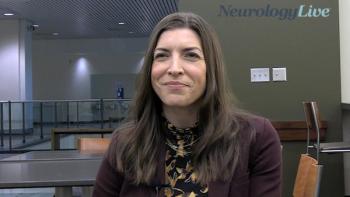
BridgeBio Pursues FDA Submission for BBP-418 in LGMD2i/R9 After Positive Topline Phase 3 Results
Key Takeaways
- BBP-418 showed significant efficacy in increasing glycosylated α-dystroglycan and improving motor and pulmonary functions in LGMD2I/R9 patients.
- The FORTIFY study's interim results support a favorable risk-benefit profile for BBP-418, with no new safety concerns observed.
The phase 3 FORTIFY trial of BBP-418 met its primary and key secondary interim analysis end points and demonstrated a safety profile consistent with prior studies in patients with LGMD2I/R9.
BridgeBio has announced positive topline results from its phase 3 FORTIFY study (NCT05775848) assessing BBP-418, an investigational small molecule oral therapy, in patients living with limb-girdle muscular dystrophy type 2I/R9 (LGMD2I/R9). Based on the findings, the company noted that it intends to engage with the FDA later this year to discuss plans for a new drug application submission for the agent in the first half of 2026.1
FORTIFY is a randomized, double-blind, placebo-controlled phase 3 study, investigating the efficacy and safety of BBP-418 for the treatment of LGMD2I/R9, a disease with no approved treatments. In the primary interim analysis end point, findings at 3 months showed a highly statistically significant 1.8-fold increase from baseline (~ 17% of control; P <.0001) of glycosylated α-dystroglycan (αDG) in the BBP-418–treated group, compared with approximately no change in the placebo group.
“Our heartfelt thanks go out to the individuals in our study, their caregivers, investigators, and study staff who have actively participated in FORTIFY and continue to contribute to this pivotal research. The FORTIFY results reaffirm the power of targeting this genetic disease at its source with relentless focus and compassion,”
Additional results recently reported from BridgeBio revealed highly statistically significant increases in glycosylated αDG that were sustained at 12 months in the BBP-418 treated group (P <.0001). The company observed substantial and highly statistically significant increases in glycosylated αDG for both patients with the L276I homozygous genotype and other FKRP genotypes. Moreover, the mean reduction in serum creatine kinas, a marker of muscle breakdown, was 82% from baseline (P < .0001) in BBP-418–treated individuals.
READ MORE:
All told, BBP-418–treated patients demonstrated statistically significant and clinically meaningful improvements at 12 months across all key clinical end points, including ambulatory function and pulmonary function. Ambulatory function, as measured by the 100-meter timed test, showed an increase in velocity of 0.14 m/s from baseline and 0.27 m/s versus placebo (P <.0001). Pulmonary function, assessed by forced vital capacity, demonstrated an increase of approximately 3% predicted volume from baseline and a difference of approximately 5% predicted volume versus placebo (P = .0071).
"I’m very excited to see that treatment with BBP-418 was associated with clinically meaningful improvements in motor and pulmonary function, along with robust restoration of αDG glycosylation. This is such an important result for individuals living with LGMD2I/R9, which is a progressive muscular dystrophy. The resulting weakness often leads loss of ambulation, need for respiratory support, and need for heart failure medications,” Katherine Mathews, MD, Professor of Pediatrics and Neurology at the University of Iowa’s Roy J. and Lucille A. Carver College of Medicine, said in a statement.1 “To date, there has been no specific treatment. These results bring enormous hope that BBP-418 might change the disease course.”
The company reported that BBP-418 was well tolerated, with no new or unexpected safety findings observed. Overall, the data from the interim analysis supported a favorable risk-benefit profile for BBP-418. Analyses of the full FORTIFY interim data set are ongoing, and the company noted that it plans to present detailed results from the trial at a future medical conference. Previously, BBP-418 received orphan drug, fast track, and rare pediatric disease designations from the FDA, as well as orphan drug designation from the European Medicines Agency.
“Living with LGMD2I/R9 is a daily negotiation with limits, and I won’t pretend it’s easy. I’m fiercely independent, but I’m not alone̶our community lifts me, and it finally feels like science is catching up to our hope, so we can look ahead with real possibility.” Dan Pope, an individual living with LGMD2I/R9 and Vice President and Advocacy Director of the CureLGMD2i Foundation, said in a statement.1
In a
REFERENCES
1. BridgeBio Reports Positive Phase 3 Results for Small Molecule BBP-418 in LGMD2I/R9 FORTIFY Study. News release. October 27, 2025. Accessed November 12, 2025. https://investor.bridgebio.com/news/news-details/2025/BridgeBio-Reports-Positive-Phase-3-Results-for-Small-Molecule-BBP-418-in-LGMD2IR9-FORTIFY-Study/default.aspx
2. Lee A. Baseline characteristics of participants in FORTIFY: a Phase 3 study to evaluate safety, tolerability, and efficacy of BBP-418 in LGMD2I/R9. Presented at: 2025 MDA Clinical & Scientific Conference; March 16-19; ABSTRACT P222
Newsletter
Keep your finger on the pulse of neurology—subscribe to NeurologyLive for expert interviews, new data, and breakthrough treatment updates.



































